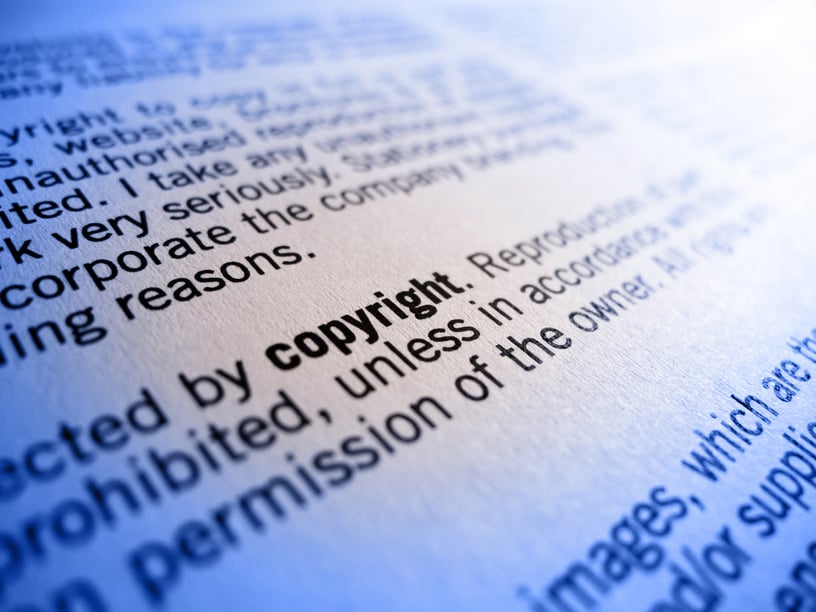Yesterday the Federal Circuit ruled in Oracle’s favor that Google committed copyright infringement when it copied Java into the Android operating system. To read the decision, click here.
The backlash has been swift and hysterical, such as Google: This Oracle Lawsuit Could Damage The Whole Software Industry. Can this really be? Is software doomed?
Is software doomed?
Can this mean the end for software? Hardly. For at least three reasons. First, Google still has a fair use defense. Copyright infringement has been like the sword of Damocles to Google. Meanwhile, fair use has shielded it from blow after blow, most recently in the Google Books case.
Second, Google admitted it copied Java. Verbatim. Say what you want about Oracle, but where I come from copying 7000 lines of code verbatim is called infringement.
Third, and most importantly, the Federal Circuit ruled that 37 Java API packages are copyrightable, which is a tremendously important win for software developers and the industry in general.
Why are the Java APIs copyrightable?
Software programs contain literal and non-literal elements. Literal elements are the source code itself. Non-literal elements are the structure, sequence, organization and displays inherent in the code. (Note: this is different from literal and non-literal copying. Very important not to confuse the two.)
Oracle claimed Google copied 7000 lines of “declaring source code,” the backbone of Java. Oracle also claimed Google copied the structure, sequence and organization of Java.
The district court said that Java was not copyrightable. Considering the very low threshold of creativity required for copyright, the Federal Circuit did the right thing in reversing.
The testimony at trial revealed that designing the Java API packages was a creative process and that the Sun/Oracle developers had a vast range of options for the structure and organization. In its copy- rightability decision, the district court specifically found that the API packages are both creative and original, and Google concedes on appeal that the originality require- ments are met. See Copyrightability Decision, 872 F. Supp. 2d at 976 (“The overall name tree, of course, has creative elements . . . .”); Id. at 999 (“Yes, it is creative. Yes, it is original.”); Appellee Br. 5 (“Google does not dispute” the district court’s finding that “the Java API clears the low originality threshold.”). The court found, however, that neither the declaring code nor the SSO was entitled to copyright protection under the Copyright Act.
The district court based its copyrightability decision on its conclusion that Oracle’s copyright in Java violated Section 102(b), the “idea-expression dichotomy.” The Federal Circuit wisely disagreed.
To the contrary, however, Con- gress emphasized that Section 102(b) “in no way enlarges or contracts the scope of copyright protection” and that its “purpose is to restate . . . that the basic dichotomy be- tween expression and idea remains unchanged.” Feist, 499 U.S. at 356 (quoting H.R. Rep. No. 1476, 94th Cong., 2d Sess. 54, reprinted in 1976 U.S.C.C.A.N. 5659, 5670). “Section 102(b) does not extinguish the protection accorded a particular expression of an idea merely because that expression is embodied in a method of operation.” Mitel, Inc. v. Iqtel, Inc., 124 F.3d 1366, 1372 (10th Cir. 1997). Section 102(a) and 102(b) are to be considered collectively so that certain expressions are subject to greater scrutiny. Id. In assessing copyrightability, the district court is required to ferret out apparent expressive aspects of a work and then separate protectable expression from “unprotectable ideas, facts, processes, and methods of operation.” See Atari, 975 F.2d at 839.
The district court also concluded that the non-literal elements of Java were not copyrightable either under 102(b) because they performed a function. Again, the Federal Circuit correctly determined that just because software code performs a function does not mean it is not expressive, and therefore copyrightable.
Great news for software, databases, compilations, forms and other “factual” works.
The Federal Circuit’s decision is a ringing endorsement of the “abstraction-filtration-comparison” test originally formulated by the Second Circuit in Computer Assocs. Int’l v. Altai, 982 F.2d 693, 704-05 (2d Cir. 1992) (“Altai”). Altai has been adopted by the majority of the circuits. When correctly applied, the Altai test helps courts make important decisions about what is protectable and what is not while preserving copyright in those elements that are truly results of the creative process.
In addition, the decision in Oracle will allow the coding revolution to continue, unimpeded. Remember, you can always choose to open source your code if you like. That is what Google did with Android, and now look at how critical mobile revenue has become for Google as a result. Should Oracle just shrug its shoulders and say, fine, pay us nothing?
On the other hand, imagine if suddenly software was not copyrightable. Would there have even been a Java? iOS? Windows? Would coding still go on, sure. But would we be where we are today? I say, no.



